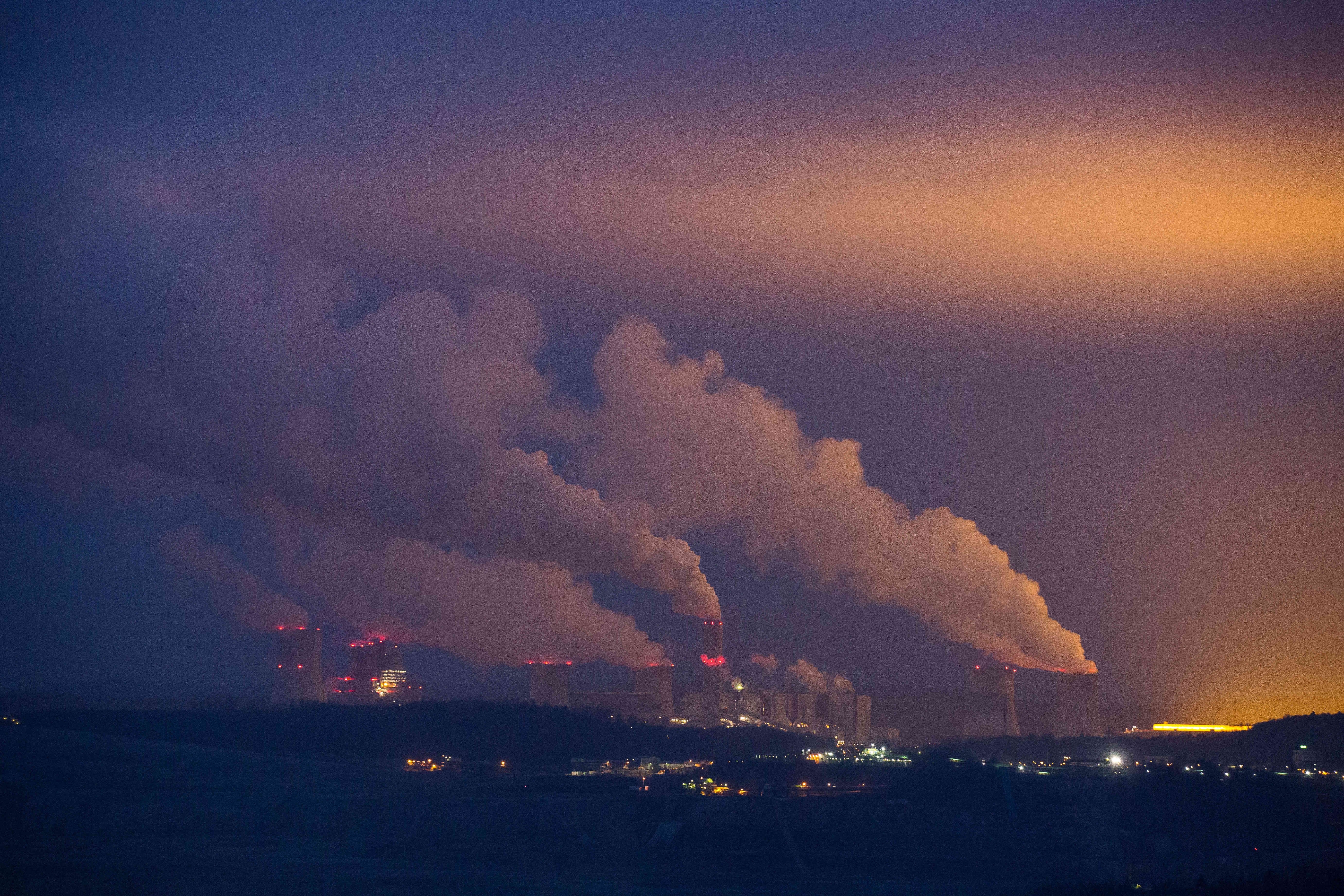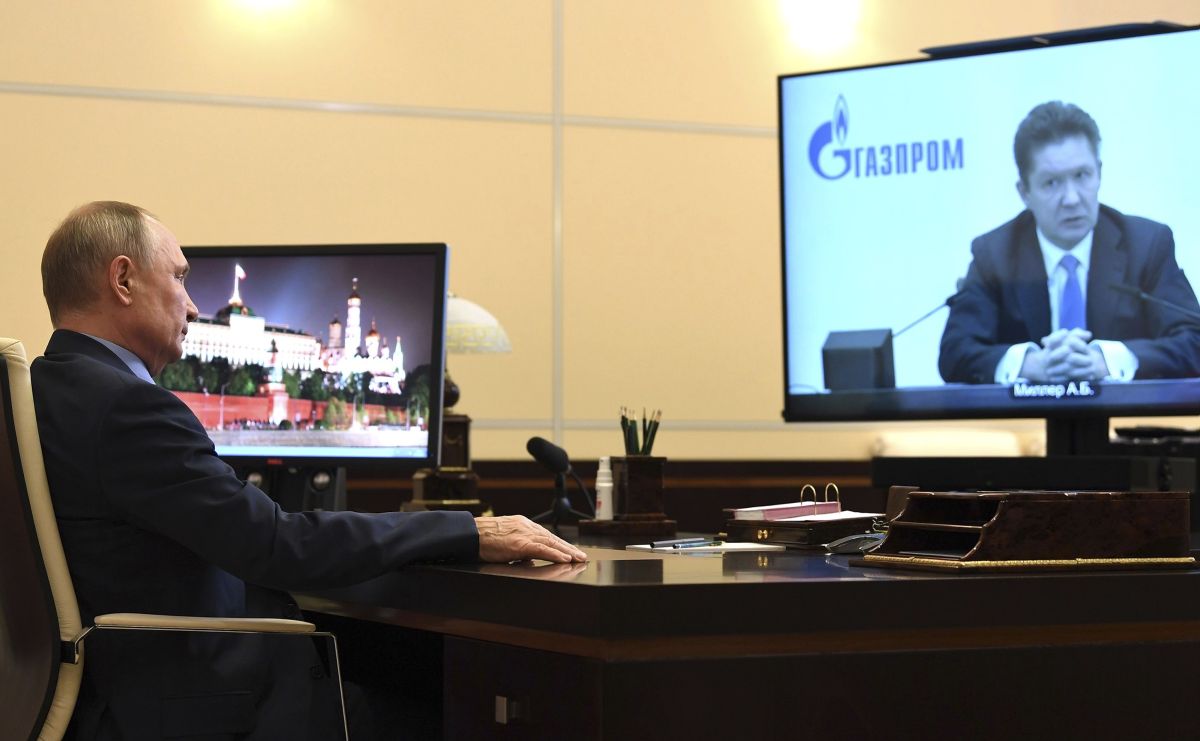Biogases: An Element of EU Energy Security
The development of European biogas is one way to make the EU independent of Russian gas supplies. It also would make a significant contribution to the implementation of the ideas underpinning the European Green Deal, including the energy transition and circular economy. The current limitations on the growth of this sector, such as financing issues, have become less important in the face of the consequences of the war in Ukraine. From Poland’s perspective, it is important to maximise the benefits for Polish businesses when developing the EU’s biogas potential.
 Silke Reents/ Visum/ FORUM
Silke Reents/ Visum/ FORUM
The European energy transition strategy announced in 2021 in the EU Fit for 55 package (part of the European Green Deal) assumes the accelerated development of renewable energy sources (RES) while limiting the use of fossil fuels. Natural gas, due to its lower emissions than coal and flexibility of use, is set to be a transition fuel on the EU’s way to decarbonisation. Gas from Russia, which accounted for around 45% of gas imports and 40% of gas consumption in the EU in 2021, could play an important role in this process. The Russian invasion of Ukraine, however, undermined the legitimacy of such dependence on gas supplies from this one direction. As part of the REPowerEU energy and climate plan announced in March this year, the EU decided to become independent from Russian energy resources by 2030 by diversifying supplies and reducing consumption. It also decided to accelerate the domestic production of renewable gases, including biogas and biomethane.
Biogas and Biomethane
Biogas is a mixture of methane, CO2, and other gases, produced through anaerobic fermentation and decomposition of organic matter (e.g., animal manure, sewage, and plant material, hence renewable resources). The final composition of biogas depends on the raw material and processing method, but it can be assumed that methane may constitute from 45% to 75% of the content. The gas is used to produce electricity and heat. Biomethane is formed by, among others, purifying biogas. It is indistinguishable from natural gas, so it can be used directly in end-user devices and distributed through the gas network. The European Commission (EC) classifies biogas and biomethane as renewable and low-emission gases and has included them in its green taxonomy. These gases also contribute to the circular economy.
According to the estimates of the European Biogas Association, biogas and biomethane meet about 4.6% of current gas demand in the EU (421 bcm in 2021), mainly in the energy and heating sectors. The gas biofuels market has been growing steadily for several years. In 2020, 18 bcm of biogas was produced in the EU, of which 3 bcm was biomethane (production of the latter had doubled compared to 2019). The EC assumes in REPowerEU that the production of biomethane will amount to 35 bcm per year by 2030.
There are currently around 20,000 biogas plants and more than 1,000 biomethane plants operating in the EU, however they are unevenly distributed. The largest number of biomethane plants is in France (around 340) and Germany (around 240). In Denmark, the share of biomethane in the gas network has already exceeded 27%. Only about 130 agricultural biogas plants operate in Poland, producing about 500 mcm of gas annually, although the available base raw material (e.g., biowaste and manure) would be sufficient to obtain about 13-15 bcm of biogas. Despite the production potential of 7-8 bcm of biomethane, not a single biomethane installation has been built so far in Poland. This is because of the lack of a legal definition of this gas and financial support for its production, among other factors.
Opportunities for the Industry’s Development
The production of biogas and biomethane in EU countries could increase their resilience to external natural gas supply shocks. As a result, it should be possible in the long term to maintain the role of gas as a transition resource (between the shift from coal to renewables) while reducing dependence on Russia.
Increasing the production of biogas and biomethane can contribute to reducing greenhouse gas (GHG) emissions in the EU by up to 15% by 2050. This is particularly important for countries with an extensive agricultural sector, such as Poland. In Polish agriculture alone, emission reductions could be as high as 80%. Biomethane can be injected into the grid or converted into bio-CNG or bio-LNG to be used for transport, etc. Its implementation in transport is relatively simple compared to grid injection due to lower investment costs, which increases the chances of EU countries meeting the requirements of the EU RED II directive on second-generation biofuels and bio-based components.
Biogas production also has a positive impact on agriculture and local communities. Municipal waste and waste from the agri-food industry can serve as substrates for its production, which facilitates waste disposal and reduces costs. A by-product of this process is digestate, which can be used as a fertiliser with better parameters than, for example, slurry or manure (fewer components negatively affecting crop growth and less intense odour). Biogas and biomethane plants also can influence the development of rural regions by providing new jobs, access to a cheap source of heat and electricity, and facilitating gasification.
In terms of so-called “green gases”, biomethane has an advantage over hydrogen in the medium term because it requires much less investment in transmission infrastructure. At the same time, compared to other renewable energy sources, it offers the possibility of cheap storage in the form of bio-LNG or within national gas-storage systems.
Challenges
The biggest constraint to the development of the industry is the high cost of biomethane production. At current technology and scale, these range from €55 to €100/MWh. So far, this has made it uncompetitive with natural gas, which in the EU has fluctuated around €20/MWh over the last decade. This has created the need for state support in the form of special feed-in tariffs (FiTs) or feed-in premiums (FiPs). In the long term, in order to avoid an increase in government expenditure, the most advanced countries in the development of the industry opted to switch from FiT/FiP to an auction system, with the result that producers’ profits fell and became less predictable. The German experience shows that this poses a threat especially to small biogas plants, which are struggling to survive. In 2020 alone, 100 such plants were closed in Germany (although the increase in installed capacity was maintained). In addition, returns are not to scale with biogas plants—higher logistics costs offset the potential gains from capacity investments.
An obstacle to the rapid development of the industry in the EU is the lack of a regulatory framework in many countries. This applies in particular to the regulation of biomethane quality, the legal framework for financial support of biogas plants and investments in gas grid connections, as well as spatial economy guidelines. In addition, the lengthy procedures involved in obtaining approval for the construction of installations make it difficult to realise investments.
In the case of biomethane installations, it is also a challenge to secure access to pipelines into which the gas could be injected. Rural areas, which have the greatest production potential, often lack this option. The capacity of the gas network to receive biomethane through the transmission system is also a challenge. The answer to these problems may lie in the liquefaction of biomethane into bio-LNG.
Another obstacle to the development of biogas plants is potential public resistance due to fear of odours. However, technologies exist to completely eliminate off-site odour emissions.
Conclusions and Prospects
The development of biogas production, especially biomethane, is currently, along with investments in wind, solar, and nuclear power, a rational way to reconcile the policy of reducing natural gas supplies from Russia while reducing CO2 emissions and exploiting the potential of EU resources.
Current natural gas prices on the European market, ranging from €80 to €200/MWh, have removed the most important barrier to the development of biogas and biomethane plants— profitability. Prices are unlikely to return to pre-2021 levels in the next few years. Even then, an effectively designed financial support scheme would help to ensure the viability of the sector. Public support is also justified by the benefits to local communities, such as jobs, access to a stable source of electricity and heat, and the development of the local gas network, as well as more efficient waste management.
For the further development of the industry, it is first necessary to ensure a stable regulatory and financial framework in all EU countries. Rapid implementation of this framework in Central and Eastern European countries, where the number of biogas plants is the smallest, including Poland, is particularly important in view of the potentially severe effects if Russia cuts off gas supplies and the need to ensure energy security.





